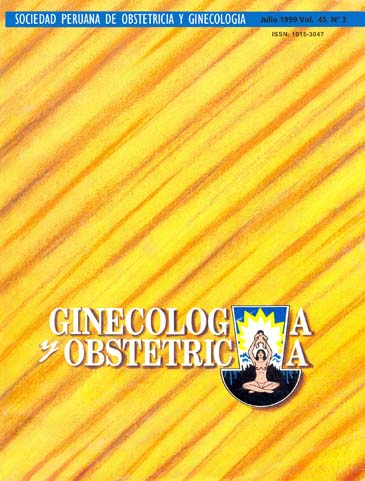REGIONAL ANALGESIA IN SELECTIVE OUTPATIENT IN PREGNANT LABOR
DOI:
https://doi.org/10.31403/rpgo.v45i642Abstract
Objective: To evaluate the efficacy of selective ambulatory regional analgesia in term pregnant women. Material and methods: Prospective cohort study done at Loayza Hospital Obstetrical Service between September and December 1998. Twenty pregnant women without risk were included and double catheter analgesia was indicated; controls were twenty other pregnant women without risk that delivered posteriorly. Results: Age, parity, gestational age, weight, pre natal control and serum hemoglobin were similar in both groups, as well as, newborn weight and gestational age. Cases received analgesia in the active phase of labor (average dilatation 5,3 cm), with good active phase in 100% and regular expulsive phase in 4 cases (20%). There was no difference in delivery route. Expulsive phase duration was 5 minutes more in cases, as well as the need for oxytocin stimulation (p<0,05), and no obstetrical consequences were found. No prolongation of the expulsive phase and no differences in Apgar were found. Conclusion: Obstetrical selective epidural double catheter analgesia aliviates pain without mother or infant risk.Downloads
Download data is not yet available.
Downloads
Published
2015-05-20
How to Cite
Siu, C., Mere, J., & Rossi, P. (2015). REGIONAL ANALGESIA IN SELECTIVE OUTPATIENT IN PREGNANT LABOR. The Peruvian Journal of Gynecology and Obstetrics, 45(3), 194–199. https://doi.org/10.31403/rpgo.v45i642
Issue
Section
Artículos Originales
















